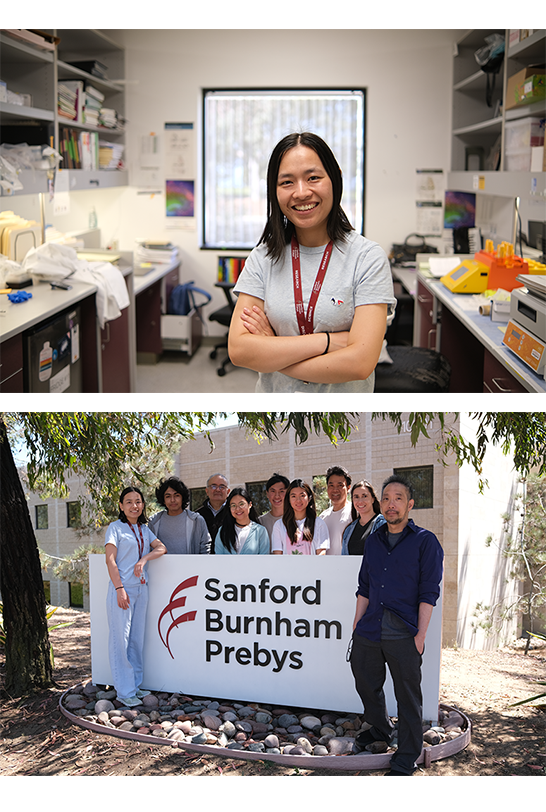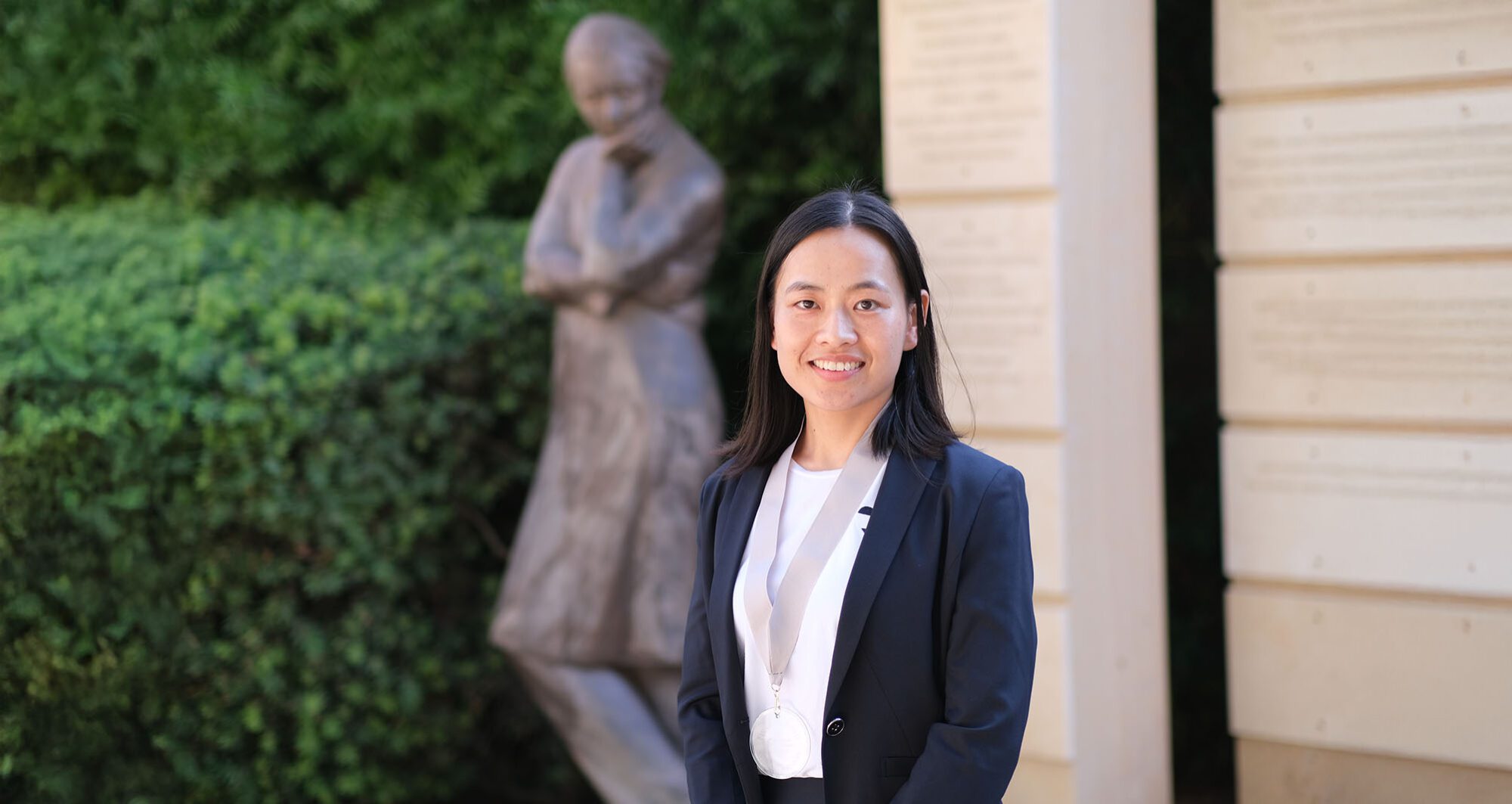With a deep curiosity about the brain and a passion for solving complex problems, Huijie Huang is a postdoctoral researcher in the lab of Dr. Timothy Huang at Sanford Burnham Prebys, where she is investigating the molecular underpinnings of Alzheimer’s disease. Her journey began in college with hands-on behavioral pharmacology research and evolved into a focused exploration of depression and neural circuits during her PhD. Now, she is using cutting-edge molecular tools to develop gene-based strategies for treating neurodegenerative disease.
When and how did you become interested in science?
In college, I had the opportunity to join a pharmacology lab. This gave me the chance to test how certain drugs effected the animal behaviors. I found it very interesting that these animal behaviors can mimic some types of human behaviors. I was really excited by this.
How has your scientific career evolved?
I was so fascinated with the principles of neural regulation of animal behavior, so I chose to focus my PhD on neuroscience. During my PhD, I did a lot of projects related to depression, where I established mouse models to mimic anhedonia and social defeat. These models enabled me to investigate dysfunctions in brain circuits associated with depressive behaviors.
After graduating, I felt the need to pursue deeper research into the molecular biological mechanisms underlying behavioral changes. I’m fortunate to be a postdoctoral researcher in Dr. Timothy Huang’s lab, where my project focuses on investigating the molecular mechanisms of sporadic Alzheimer’s disease. The lab’s diverse expertise includes molecular biology, genetics and neurobiology, and has allowed me to approach the project from multiple angles and think more broadly and translationally about the impact of our research.
What brought you to the Huang lab at Sanford Burnham Prebys?
I was fascinated by the research projects in Dr. Timothy Huang’s lab. After the interview, I realized I would have the opportunity to lead an independent project aimed at developing a new platform to study human risk genes using a chimeric mouse model. This approach would allow me to fully utilize a variety of cutting-edge technologies, and I believed it would be an exceptional opportunity for scientific and professional growth.

What are the key areas of research you focus on?
My research focuses on developing novel neuroprotective strategies for Alzheimer’s disease. Current clinical treatments primarily aim to relieve mood-related symptoms, using cholinesterase inhibitors or antidepressants, but these approaches offer only symptomatic relief. The new immunotherapies, such as those targeting amyloid beta plaques, are designed to slow disease progression. However, their clinical efficacy remains limited, patient responses are highly variable, and the treatments are costly.
Given these challenges, there is an urgent need for new therapeutic strategies. Our work investigates genes and proteins that influence the risk of sporadic Alzheimer’s disease, which may lead to broadly applicable, gene-based interventions.
What motivates you about your research?
It’s a combination of curiosity and a desire to make a meaningful impact. Curiosity drives me to ask deeper questions and design more insightful experiments. I also find motivation in the research process itself—troubleshooting challenges encourages critical thinking and fosters collaboration with others.
What do you like about working here?
I love it here! The people are all very kind, and you can get help from colleagues, neighboring labs and core facilities. I’d like to especially applaud our core facilities experts for being so professional and efficient. I never have to wait a long time to get our projects and experiments done.
Another important factor is that Tim is very supportive of his team. We have a quite independent but also collaborative environment among colleagues and mentor. When we need help, he will try his best to collaboratively solve the problem or connect us with people in his network with the right expertise.
How would you describe the culture here?
Collaboration is ingrained in the culture and quite easy. If you want to discuss something, you just stop by other labs and people are open to working together. Also, we are surrounded here by different labs with experts in many fields. This contributes to a culture of constant learning and collaboration.
There also are many resources here for postdocs. There are opportunities to apply for funding, workshops for career development and the highly engaged Sanford Burnham Prebys Science Network that plans networking and social events and addresses concerns raised by postdocs.
What are your hopes for the next stage in your career?
I truly love science, and would like to continue research on neurodegenerative diseases, and I am preparing myself to be independent as a principal investigator or team leader.
What do you enjoy doing when you’re not in the lab?
I like hiking, cycling and playing table tennis.
Postdocs at Sanford Burnham Prebys are pushing the boundaries of science every day through curiosity, collaboration, and innovation. This series highlights their unique journeys, what inspires their work, and the impact they’re making across our labs.
